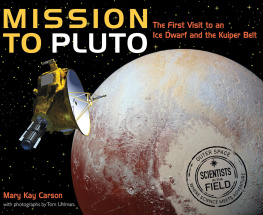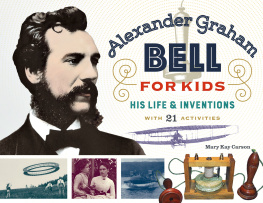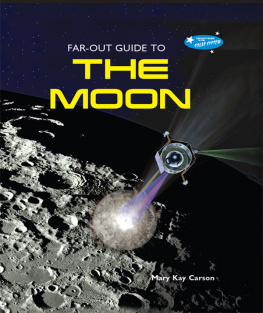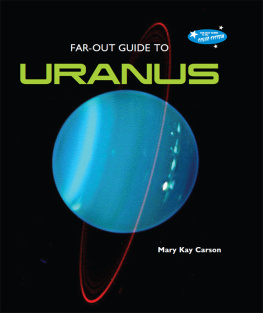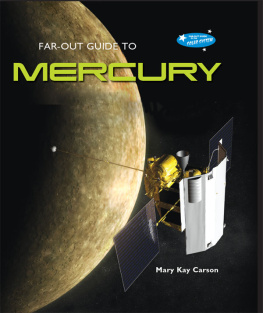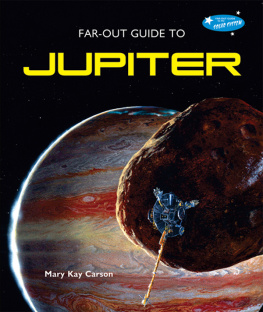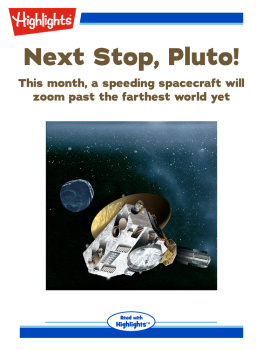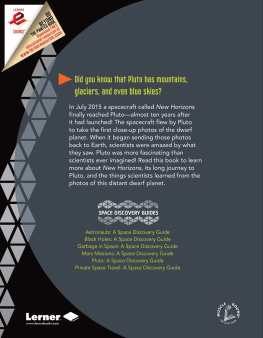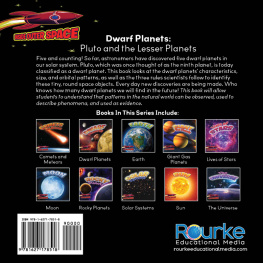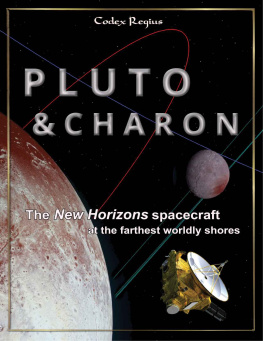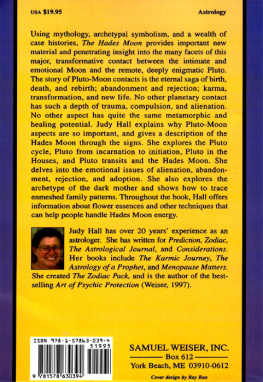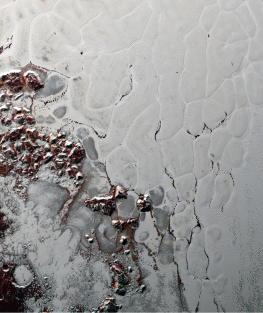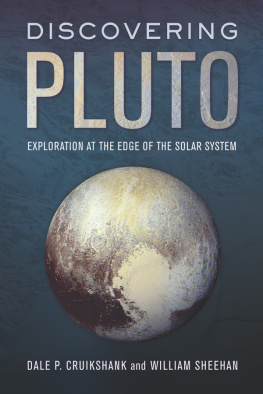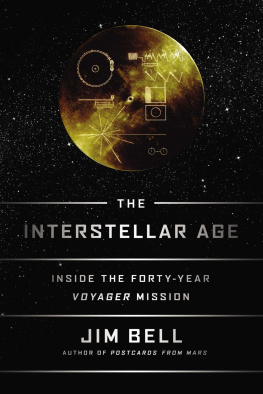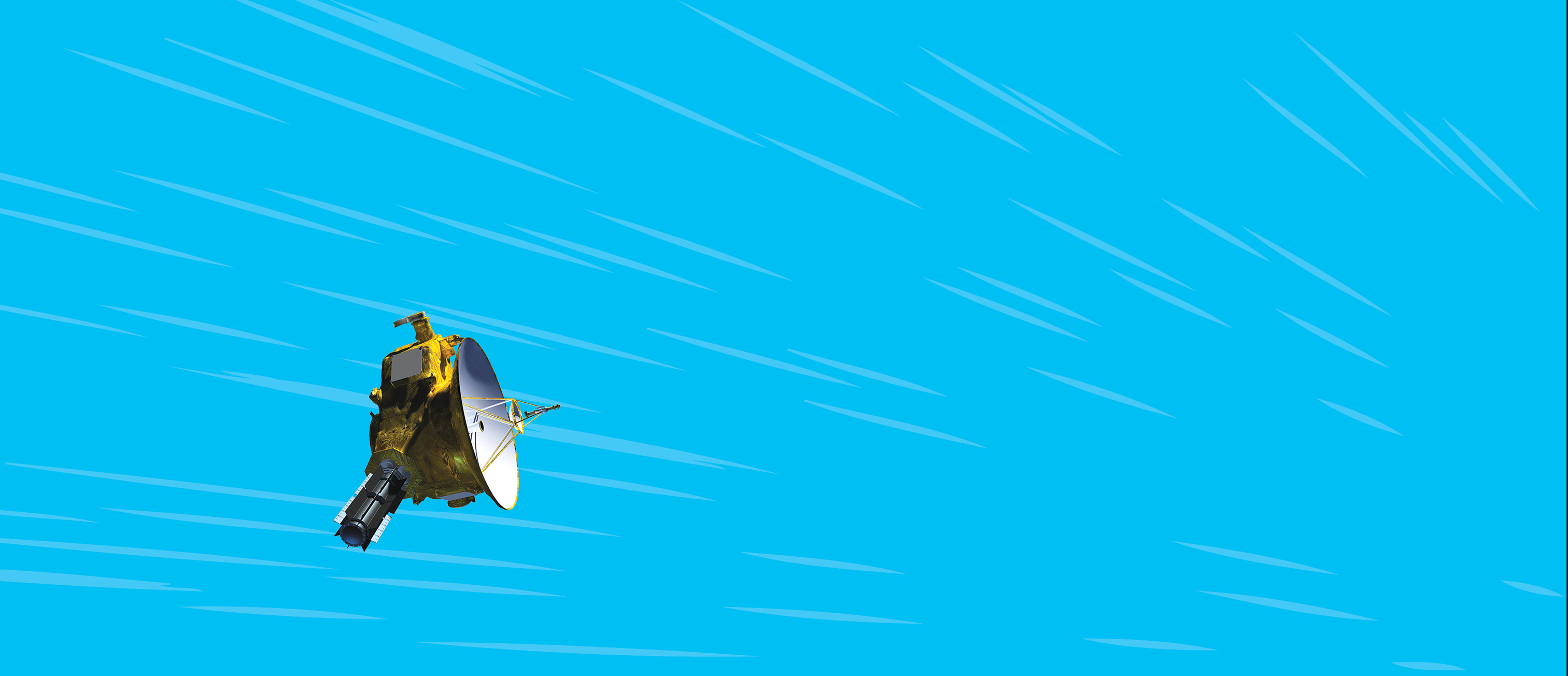Text copyright 2016 by Mary Kay Carson
Illustrations by Jennifer Goldstick
Photo credits can be found on .
All rights reserved. For information about permission to reproduce selections from this book, write to or to Permissions, Houghton Mifflin Harcourt Publishing Company, 3 Park Avenue, 19th Floor, New York, New York 10016.
www.hmhco.com
In this book, the name of the spacecraft is spelled in italicsNew Horizons.
When the name refers to the overall mission, it is spelled in regular typeas in the New Horizons team.
This is the same for other spacecraft and missions mentioned in the book.
The illustrations in this book were created digitally in Illustrator.
Cover photographs: spacecraft by JHUAPL/SWRI; Pluto by NASA/JHUAPL/SWRI
The Library of Congress has cataloged the print edition as follows:
Names: Carson, Mary Kay, author. | Uhlman, Tom, illustrator.
Title: Mission to Pluto : the first visit to an ice dwarf and the Kuiper belt / Mary Kay Carson ; with photographs by Tom Uhlman.
Other titles: Scientists in the field.
Description: Boston : Houghton Mifflin Harcourt, [2016] | Series: Scientists in the field | Audience: Ages 1012. | Audience: Grades 4 to 6.
Identifiers: LCCN 2015037656 | ISBN 9780544416710
Subjects: LCSH: New Horizons (Spacecraft)Juvenile literature. | Space flightJuvenile literature. | Interplanetary voyagesJuvenile literature. | Pluto (Dwarf planet)Juvenile literature. | Kuiper BeltJuvenile literature. | Outer spaceExplorationjuvenile literature.
Classification: LCC QB701.C37 2016 | DDC 629.43/54922dc23 LC record available at http://lccn.loc.gov/2015037656
eISBN 978-0-544-86810-6
v1.1216
For our space enthusiast nephew, Noah George Basso
M.K.C. and T.U.
One
A Long-Awaited Encounter
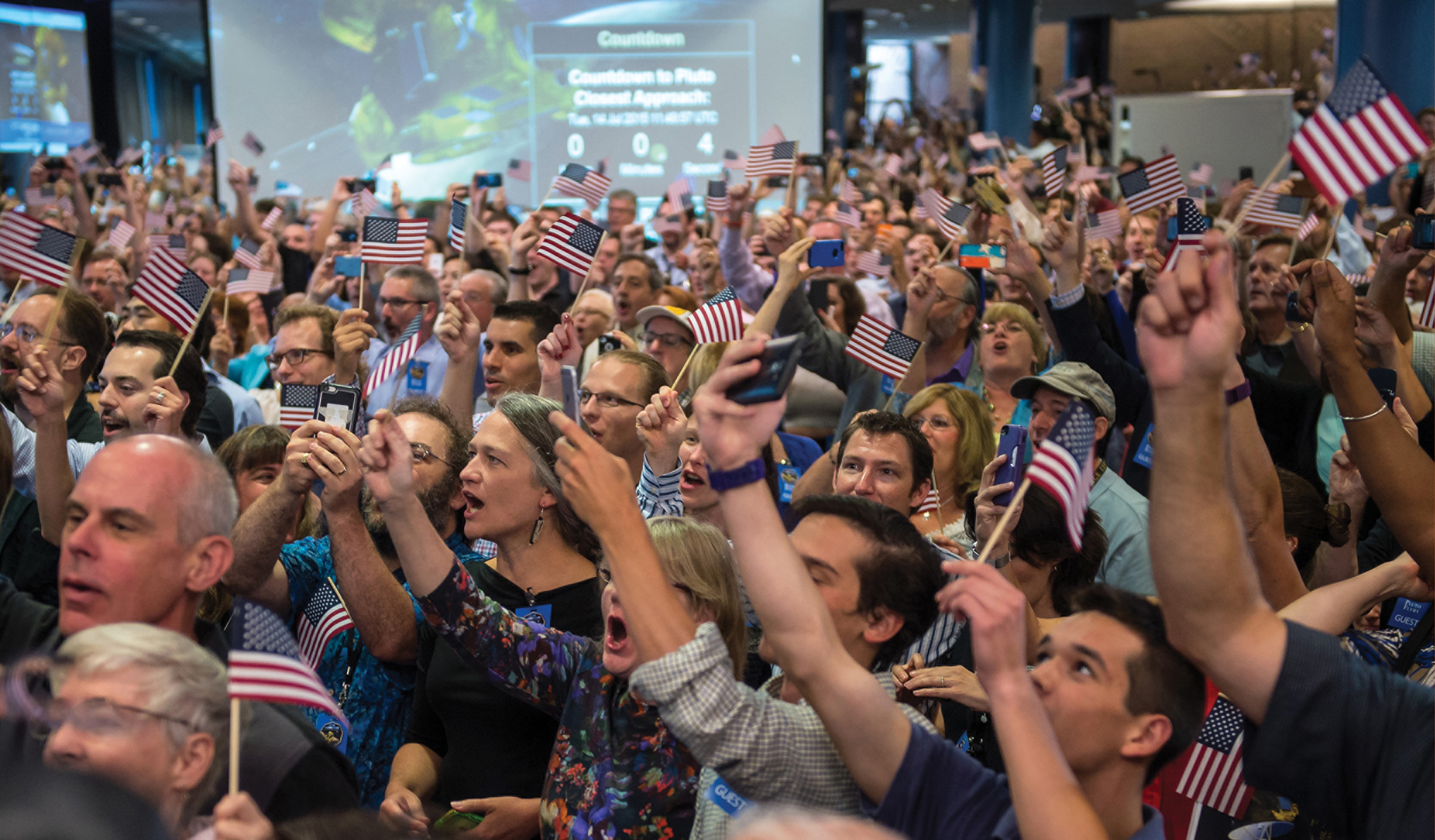
THE CROWD GOES WILD AS NEW HORIZONS FLIES THROUGH THE PLUTO SYSTEM.
The large meeting room was packed and noisy. Hundreds of people mingled, holding small American flags, chatting with excitement, and eating snacks. Some wore black shirts with an official nine-sided mission patch that showed a small robotic spacecraft flying above a peach-colored dwarf planet with a moon in the background. The crowd also included family members, guests from across the globe, television crews, reporters, and even a few celebrities such as Bill Nye, the Science Guy.
At the front of the room, the grown children of astronomer Clyde Tombaugh spoke to the audience. The dozens of big-screen televisions throughout the room, lobby, and huge overflow tent outside mirrored their proud smiling faces. When my dad discovered Pluto, he only saw a speck of light, seventy-five-year-old Annette Tombaugh said. Now were finally going to find out what it really looks like, she told the crowd. Cheers rose from below the stage.
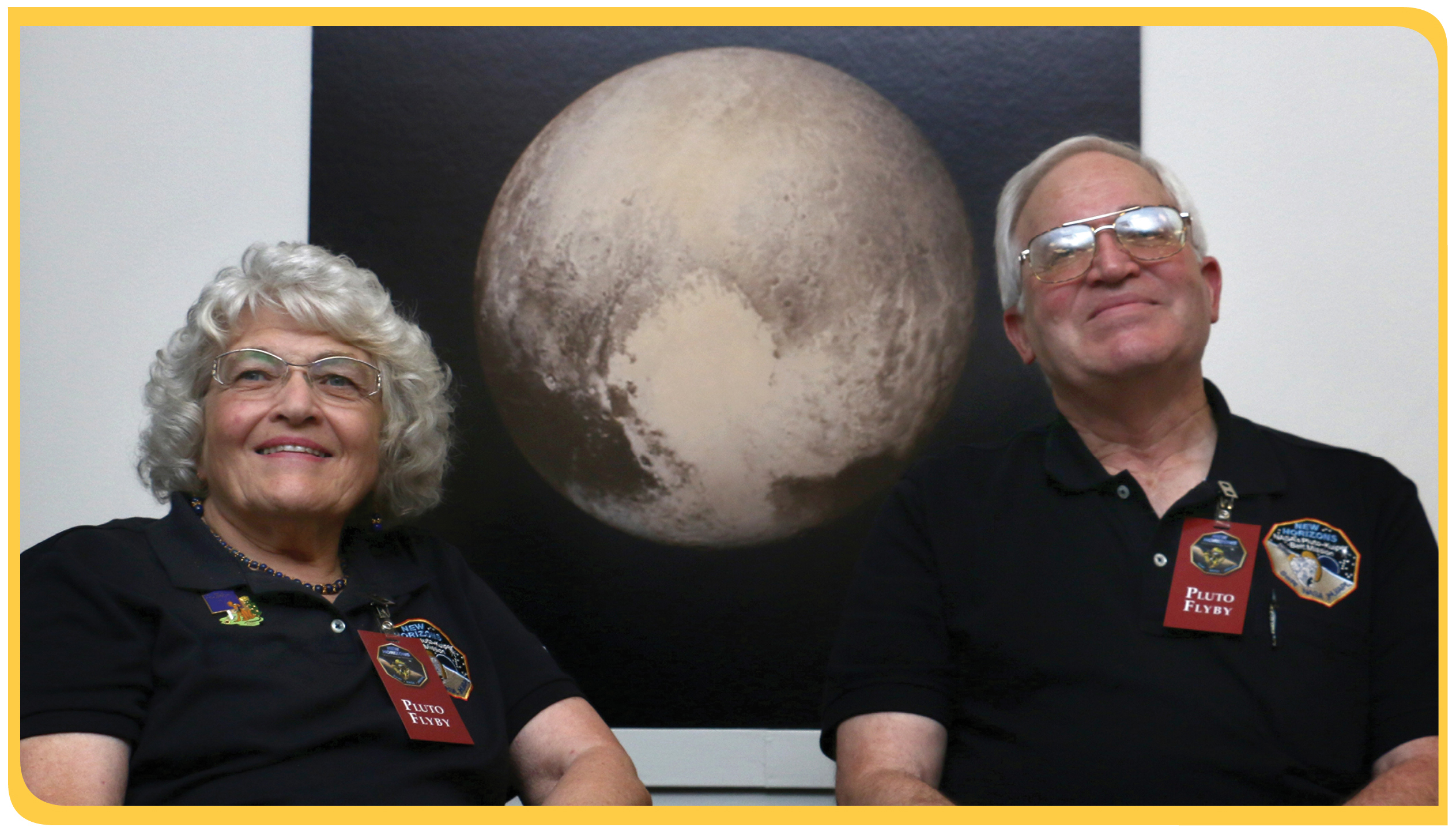
AMONG THE HONORED GUESTS AT THE FLYBY CELEBRATION WERE ANNETTE AND ALDEN TOMBAUGH, THE PLUTO DISCOVERER CLYDE TOMBAUGHS DAUGHTER AND SON.
The television screens showed countdown clocks ticking away the seconds, giving the gathering a New Years Eve party feel; except it was 7:45 in the morning. Cups were filled with coffee, not champagne. By the time the clocks ticked down to less than five minutes, it was standing room only. Onscreen alongside the countdown was a computer image of a busy spacecraft. Its instruments took turns scanning a bright, round space object. And that faraway world was getting closer by the second.
The spacecraft was New Horizons, and Pluto its destination.
The crowd began counting down. Nine, eight, seven, six.... At zero, whoops and cheers rang out. People waved their flags and clapped, and someone with a microphone yelled, New Horizons at Pluto 2015! More than one face shone with tears. It was a historic moment, after all. The fastest spacecraft ever to leave Earth had just completed the farthest voyage to a target destination and become the first ever to explore Pluto. The small robotic probe on the computer screen didnt pause during all the hoopla. After traveling 3 billion miles (4.8 billion kilometers) for nine and a half years, its focus was Pluto. Only 7,750 miles (12,472 kilometers) separated it from the icy surface, about the distance between New York City and Mumbai, India. This was prime time for taking measurements, scanning the surface, and snapping close-up photos. New Horizons was flying its closest pass by Pluto. It had work to do.
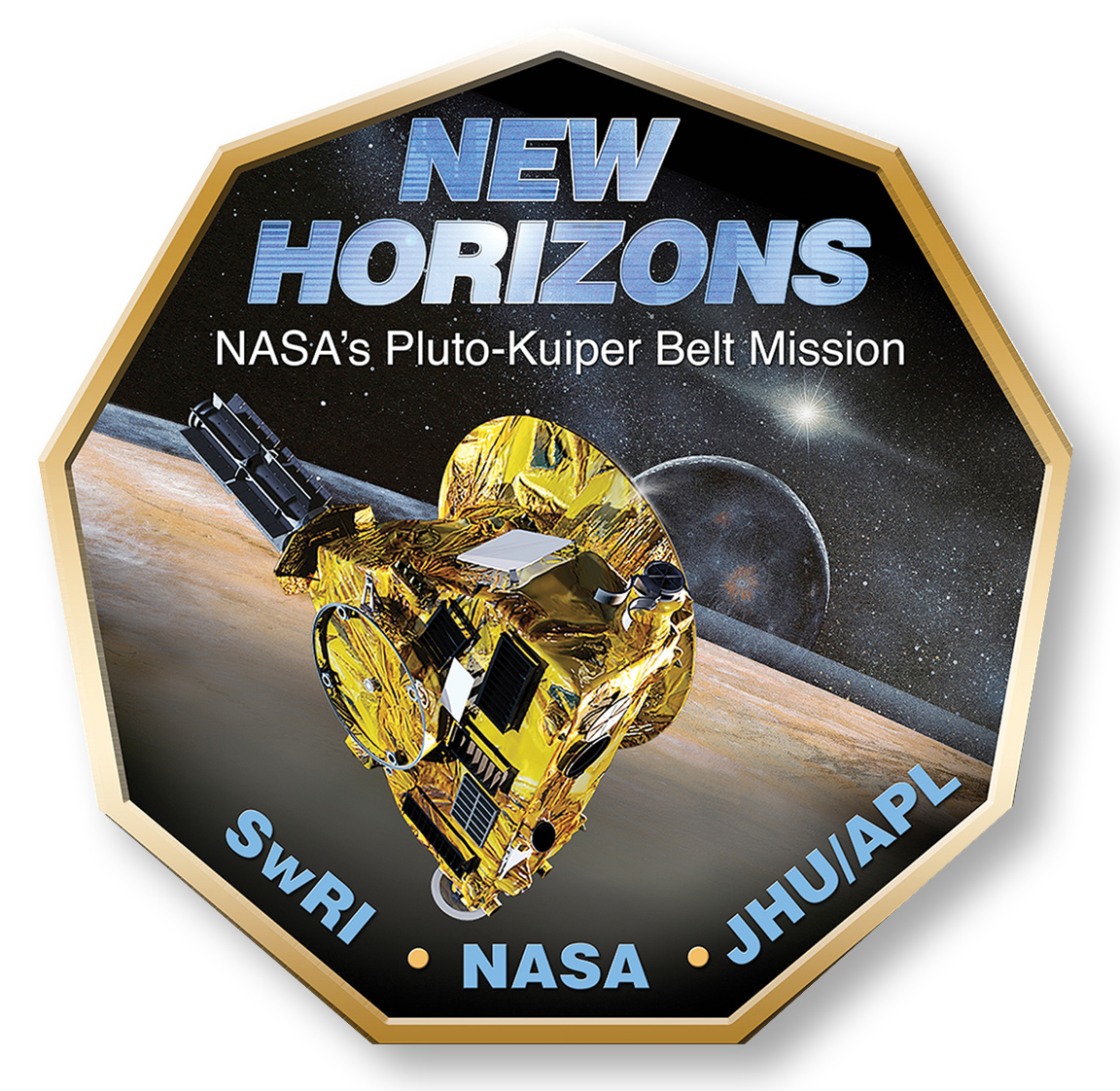
THE OFFICIAL NEW HORIZONS MISSION PATCH.
PATIENCE + PERSISTENCE = PLUTO
Its a moment of celebration, said a man in a black shirt sporting a mission patch. As the missions principal investigator, Alan Stern is the leader of the team that designed, built, and flew the spacecraft to Pluto. The New Horizons team is proud to have accomplished the first exploration of the Pluto system. This mission has inspired people across the world with the excitement of exploration and what humankind can achieve. Its hard to imagine getting to Pluto without Alan Stern.
Exploring Pluto has been Alan Sterns dream for most of his working life. Two of my three favorite p-words are patience and persistence, said Alan with a smile. Both were required to get to his other favorite p-word, which you can probably guess. (Yep, its Pluto.) His years of effort could be counted in decades. Alan started pushing for a Pluto mission nearly thirty years ago. How does it feel to finally get there? It feels good, really good, he said.
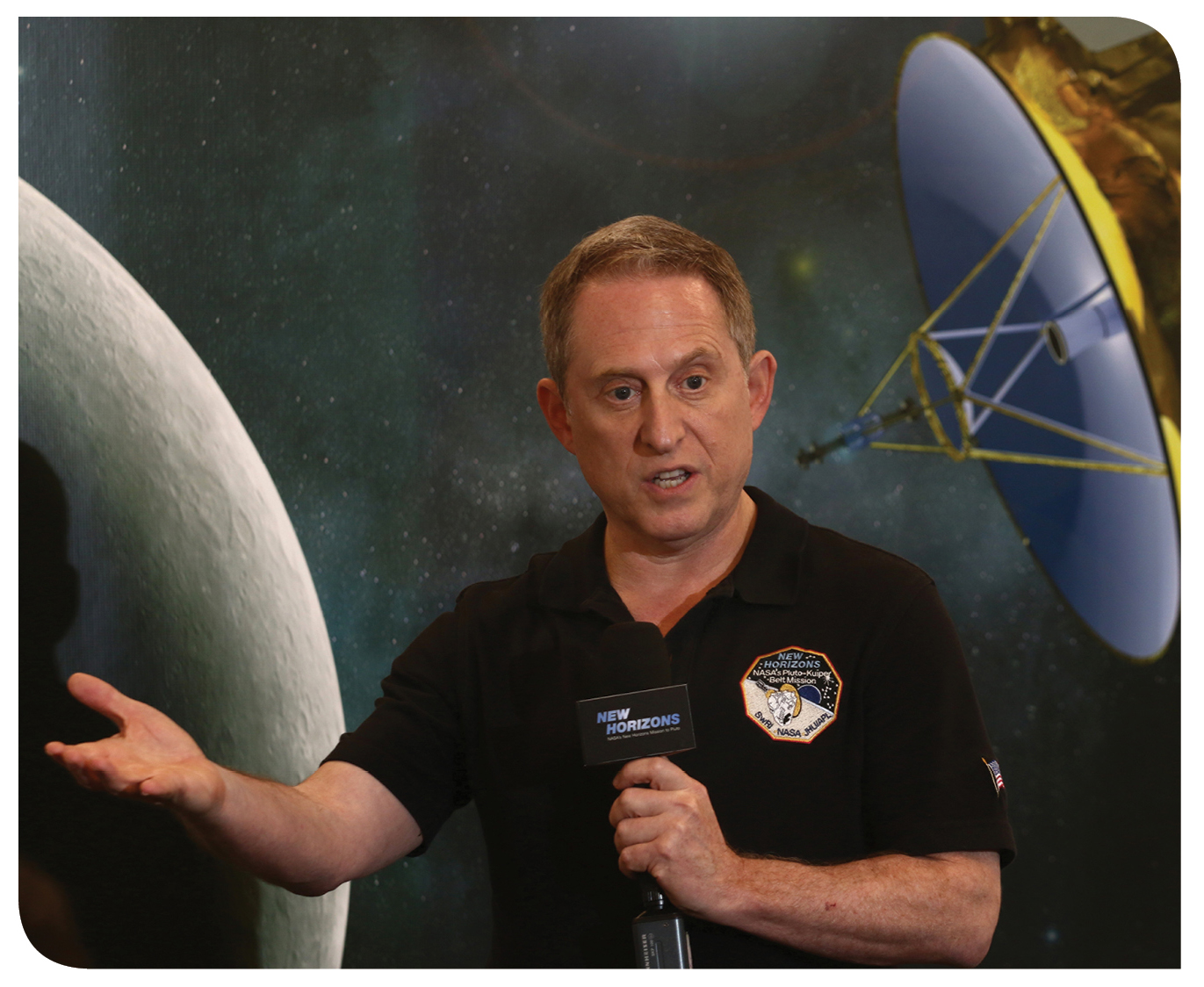
NEW HORIZONS IS SOMETHING OUR GRANDKIDS WILL KNOW ABOUT, SAID ALAN. ITS A ONCE-IN-A-LIFETIME EXPERIENCE FOR ALL THE ENGINEERS AND SCIENTISTS WHO MAKE UP THE INCREDIBLE NEW HORIZONS TEAM.
Alan Stern was a moon-landing kid. He grew up during the 1960s70s while NASA was sending people to the moon. The Apollo astronauts were the first humans to set foot on a space object, the first to walk on another world. The adventure of exploring space was infectious in those days. Everybody had an astronaut helmet and a little silver Halloween suit, Alan recalled. He caught the astronaut bug early on. I wanted to be a scientist when I was a little kid, he said. And I wanted to be an astronaut. Alan studied physics and astronomy in college and earned degrees in aerospace engineering. He also applied for NASAs astronaut program. I came quite close, he said. But I wasnt selected in the end.
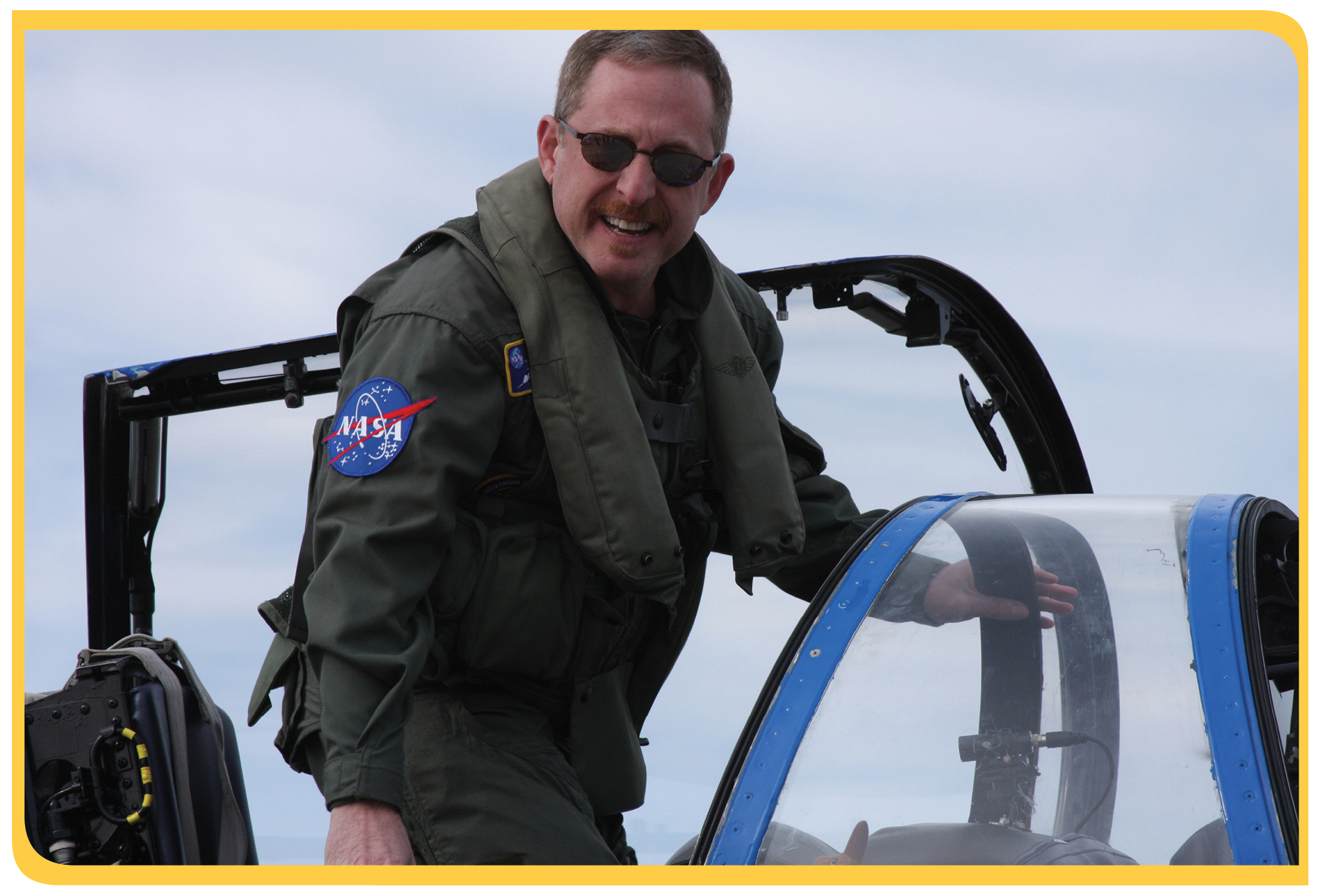
ALAN STERN MIGHT NOT HAVE BECOME A NASA ASTRONAUT, BUT HE STILL PLANS TO FLY INTO SPACE. HES BEEN TRAINING FOR A COMMERCIAL SPACE FLIGHT ON VIRGINS GALACTIC.
Alan did work on space missions, though. He helped build astronomy instruments that flew onboard the space shuttles. The Challenger disaster of 1986 changed all that. The space shuttle broke apart seventy-three seconds after the launch, killing all seven crew members onboard. Alan knew most of them well. It was a very personal tragedy, he said. It was a very difficult period in my life and my career. NASA grounded the entire shuttle fleet for nearly three years after the accident, and Alan decided to make a career change. Designing and building scientific instruments was engineering work. He liked it, but the part that thrilled him the most was studying the findings and making discoveriesthe science. It really swept me off my feet, he said. I decided I wanted to be a space scientist as a result.

